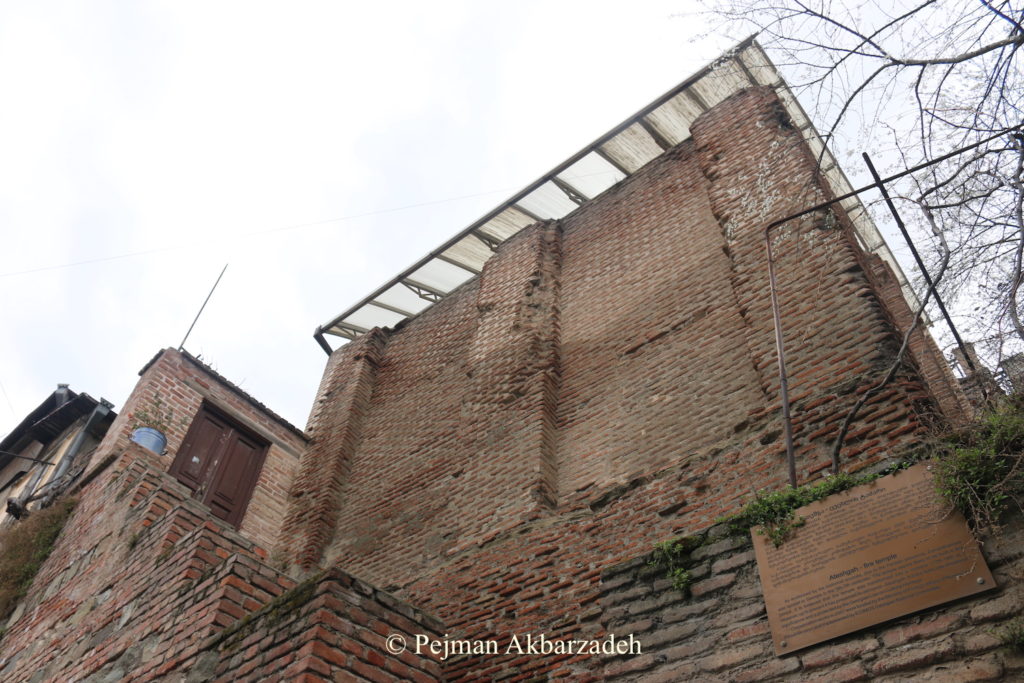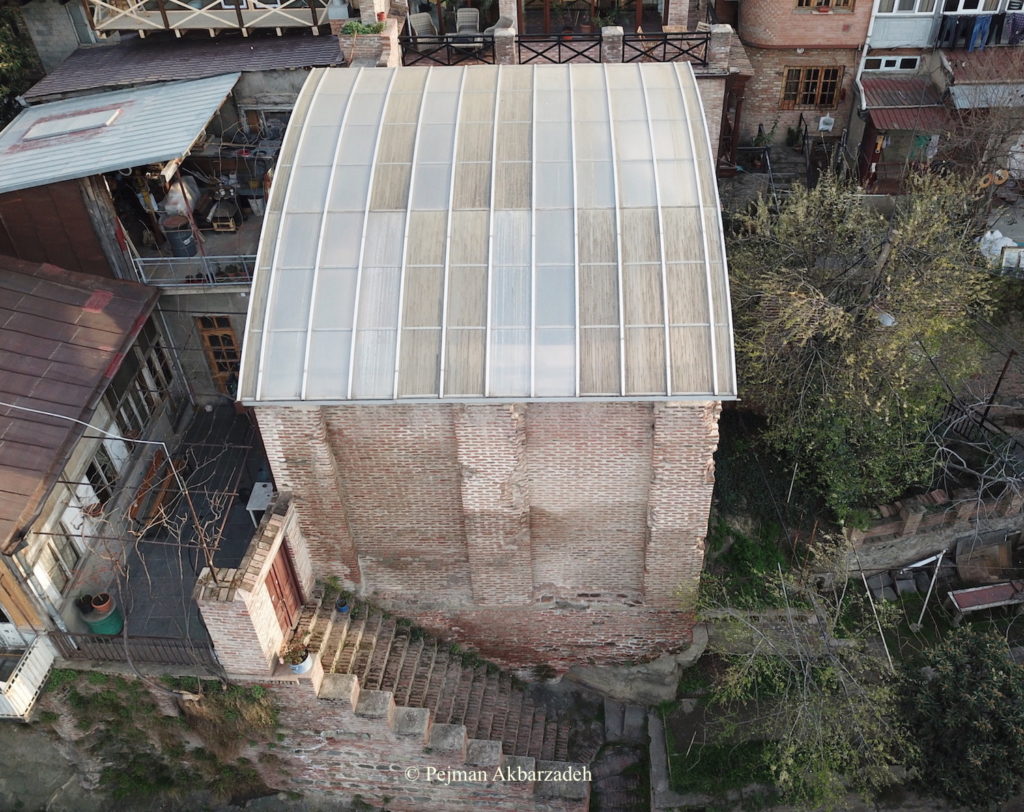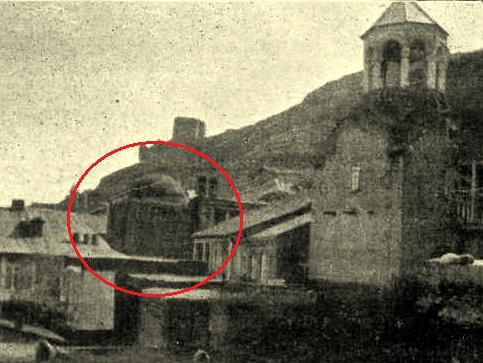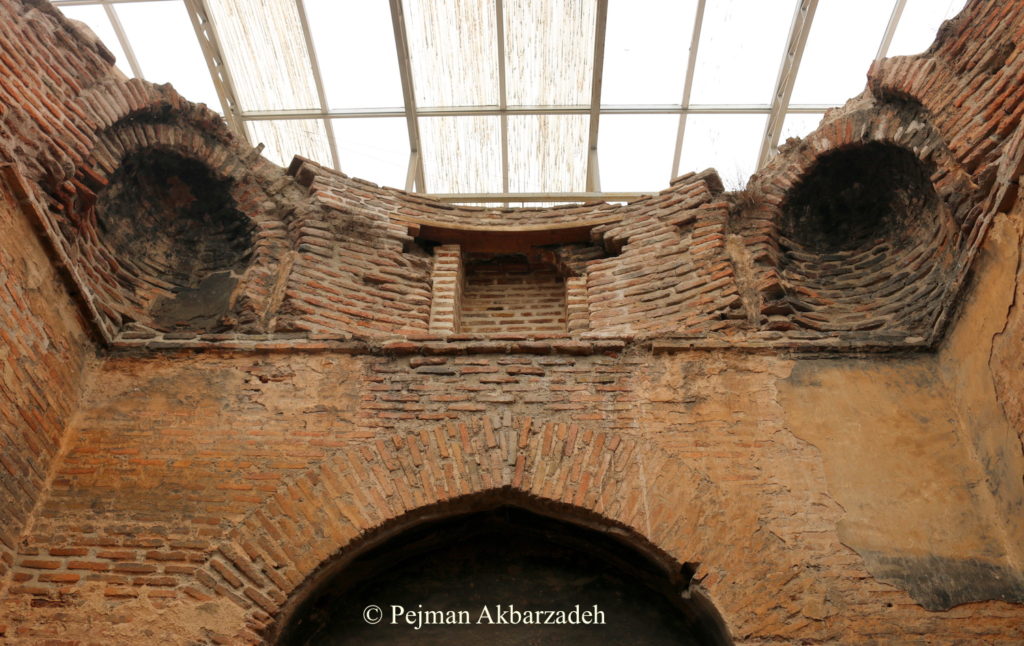By Pejman Akbarzadeh
Source: BBC Persian Service
28 June 2019

On the tourism websites of the Republic of Georgia, a Persian name attracted my attention: ‘Atashgah’. It means ‘place of fire’ and its use is usually associated with Zoroastrian fire temples. The history of the Atashgah in the capital city of Tbilisi goes back to the 5th or 6th century, when Persia was ruled by the Sasanian dynasty, of which Georgia was a part.
Until 2007, Tbilisi’s Atashgah was in danger of destruction, until finally − with the financial support of the Norwegian Ministry of Foreign Affairs − it was restored and a protective roof was installed. Historical fire temples outside the modern borders of Persia (Iran) are quite rare.

Tbilisi’s Atashgah, or Ateshgah as they pronounce it in Georgian, is built on the foothills, below the historical fortress Narikala. It may be the northernmost Zoroastrian fire temple in the world.
“In various 17th-century travelogues, including Chardin’s and Tournefort’s, the Ateshgah is mentioned as one of the famous buildings of Tbilisi,” says Guram Kipiani, an archaeology professor at the Ilia State University in Tbilisi. “Analysing the construction layers of the monument clearly shows it was originally built in Chahar-Taqi style, which is a common style in the Sasanian era. However, it was changed in the later centuries,” he adds.
Current Status of Tbilis’s Ateshgah
The Atashgah is now located in Tbilisi’s old town, in the yard of a house. To visit the site you need to knock on the landlord’s door. As many people are not aware of this requirement, they believe it is closed. In 19th-century photographs, a dome can be seen at the top of the building. This dome collapsed and was not rebuilt. Today, just the main room (8.2×8.5 metres) remains. The height of the external walls is approximately seven metres. The fire temple is built on mountain stones and its floor is not flat. In recent years, a wooden platform has been installed which visitors may walk on.

A Fire Temple That Became a Mosque
Various changes were made in the Islamic era to the original building of the Atashgah. Its interior design, for example, features broken arches, which is a distinctive characteristic of post-Islamic architecture. Following the Arab conquest of Persia in the 7th century, usage of the building as a fire temple was halted. Prof Kipiani believes that in the 8th century, when the Arabs were firmly settled in the area, the fire temple was turned into a mosque. “They filled the arches and attached decorative facades,” he says.

Alexander Chulukhadze, head of the Oriental Studies department at the University of Georgia, adds: “Arabs stayed in Tbilisi for around four centuries. We have no information about the situation of the Zoroastrian community in this era but, based on historical sources, in the 11th and 12th centuries, the Ateshgah became an observatory. Through these centuries, various changes were made to the building. However, the original layers of brick from the Sasanian period still exist.”
Georgia became part of the Persian Empire once again in the 16th century, when the Safavid dynasty came to power. Prof Chulukhadze believes that, after the collapse of Safavid Empire, the Ottoman Turks conquered Tbilisi and the building once again became a mosque. “Any inscription on the site would most likely have been destroyed,” he says.
The Ottomans were expelled from Tbilisi in the 1730s after Persia’s Nader Shah campaign in the Caucasus. The Atashgah was gradually abandoned. The building was used as a warehouse for a while and was never restored. Prof Chulukhadze believes one of the reasons for such neglect in the early 20th century is the situation of the area under Stalin. “The communists destroyed various temples and mosques, thus the Georgian historians and archaeologists did not mention the Ateshgah in their works on purpose. They did not want to attract any attention to this building which may cause its destruction. However, the Persian families were the owners of the building until the Russian invasion in the 19th century.”
In 1986, the Soviet government gave the Ateshgah the status of a site of ‘National Significance’. In 2007, years after the collapse of the USSR and creation of new independent states in the region, the government of Georgia assigned the Ateshgah the status of a site of ‘Cultural Heritage’.
(English translation of this article is funded by the World Zoroastrian Organisation; Read the original article in Persian)
RELATED CONTENT: Treasure of Persian Manuscripts at Dagestan Scientific Centre
Persian Collection of Dagestan National Museum in Makhachkala